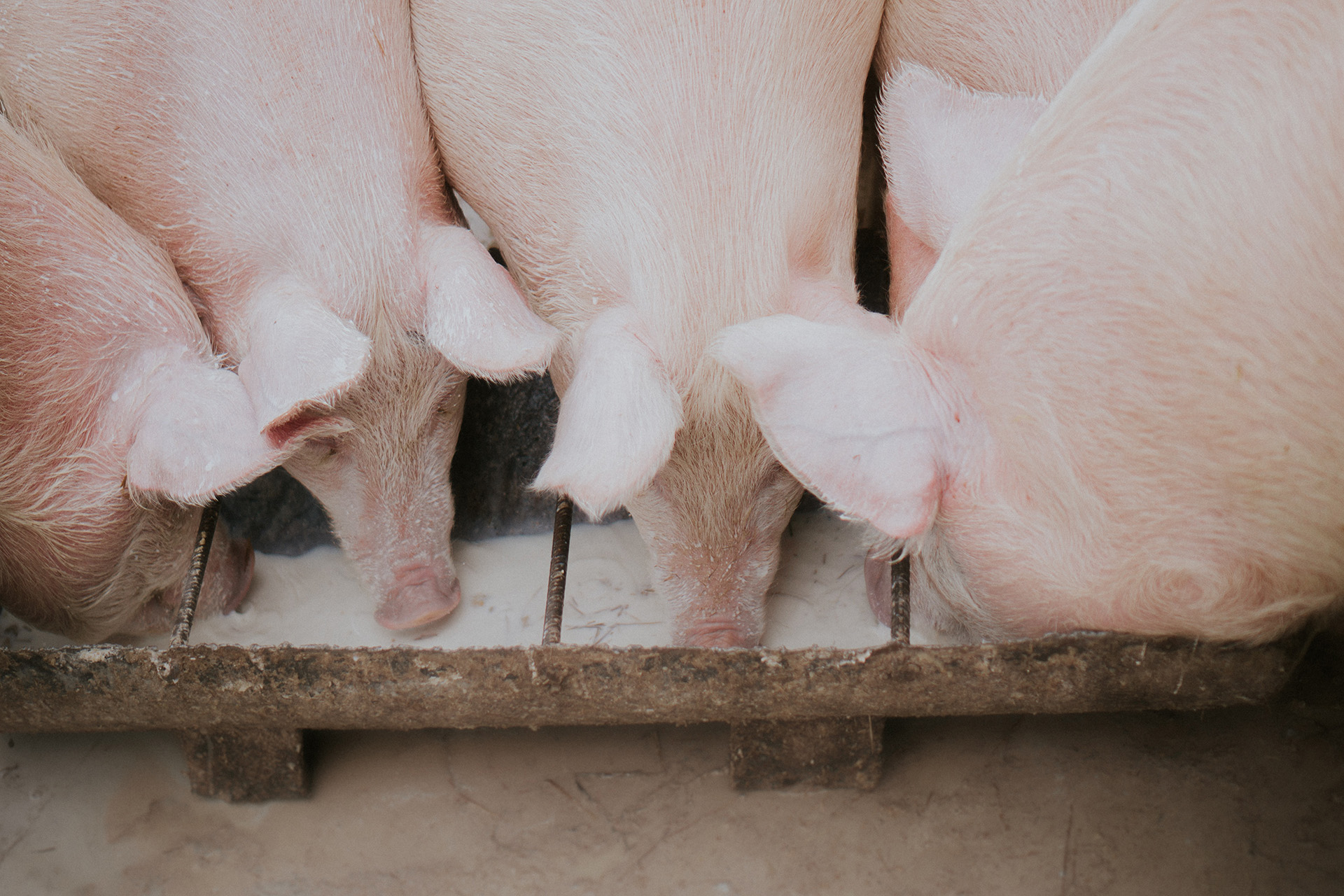
Emissions
The challenges facing food manufacturers on Scope 3 emissions
Cutting Scope 3 emissions from food manufacturers’ supply chains will take time, money and patience. Dean Best reports.
W
hen it comes to greenhouse-gas emissions, three really is the magic number.
It’s also the number causing furrowed brows at food manufacturers looking to reduce their environmental footprint.
The bulk of a typical food manufacturer’s emissions are now usually defined as Scope 3 emissions. Under the internationally-recognised Greenhouse Gas Protocol an organisation’s emissions are split into three ‘scopes’. Scope 1 covers direct emissions from owned or controlled sources. A second, Scope 2, covers indirect emissions from the generation of the electricity, steam, heating and cooling bought and consumed by an organisation. Scope 3 includes all other indirect emissions that occur in a company’s value chain.
Scope 3 emissions can account for 90-95% of a food manufacturer’s emissions – and, if a company is serious about aligning its business with the UN’s climate goals, these need to be tackled.
However, with Scope 3 emissions occurring throughout the value chain, they can be hard to calculate and, given a food manufacturer is working with numerous actors, difficult to address and reduce.
“This definitely keeps our members awake at night,” Ignacio Gavilan, sustainability director at industry association The Consumer Goods Forum, says. “It’s something that was not given proper attention until the last 18 months and then, over the past six and definitely with COP26, it escalated. Members are concerned about Scope 3.”
Few public targets
However, it’s far from being the case that all major food manufacturers have set out targets to tackle these emissions. A report published in the autumn by the World Benchmarking Alliance (WBA) ranked the 350 largest food and agriculture companies on their work on their environmental, nutritional and social impacts.
At the time, the data showed only 26 of the world’s largest food and agriculture companies were working to reduce their Scope 1 and 2 greenhouse gas emissions in line with the Paris Agreement. When it was published, the data showed only seven had either a time-bound target to reduce Scope 3 emissions in line with the UN’s 1.5°C warming target or a ‘net-zero by 2050 target’.
Earthworm, the non-profit formerly known as The Forest Trust/TFT, says the lack of disclosure around Scope 3 emissions is “telling”.
“We don’t just need food businesses to disclose their Scope 3 emissions, we need them to proactively take action to reduce them,” Earthworm CEO Bastien Sachet says. “By the middle of the century, the same time as so many corporate net zero targets are to be achieved, it’s estimated we will need to produce 50% more food. There is much to do to ensure that demand is met without driving further deforestation.”
He adds: “Net zero targets cannot be achieved without businesses going out there to reach, influence and support their suppliers to not just change their agricultural practices, but transform them, using regenerative agriculture to get better use of their land, in ways that don’t harm the soil and wider environment.”
To try to get to grips with Scope 3, a food manufacturer must turn to its suppliers and work with the numerous ingredients, packaging, distribution (and more) businesses in their value chains.
Nevertheless, data out last month (across industries, not only in the packaged-food industry) gives an indication of how challenging that task will be.
CDP, the UK-based non-profit that helps businesses measure their environmental impact, issued its Global Supply Chain Report 2021. For the report, around 200 large businesses across industries (in food, they included PepsiCo, Unilever, Grupo Bimbo, Kellogg and Marfrig Global Foods) asked for information from more than 23,000 suppliers on risks and opportunities related to climate change, forests and water security.
Around 11,400 suppliers (including more than 5,000 SMEs) responded, which CDP said was a “record” for its reporting but still equated to less than half of those surveyed. Of those suppliers that provided information, the CDP said 71% reported Scope 1 emissions, 55% Scope 2 and 20% Scope 3 from purchased goods and services.
The challenge is huge. Mars, home to brands from Snickers chocolate and Dolmio cooking sauces to Pedigree pet food, started work on Scope 3 emissions more than a decade ago. It wasn’t until 2017 the US giant felt able to set public targets, which they updated last year to a goal of net-zero greenhouse gas emissions across its value chain by 2050.
“We’ve leaned in quite hard on better understanding Scope 3 and on setting targets and are now, it’s fair to say, several years into executing strategies to actually work on Scope 3,” Kevin Rabinovitch, global vice president for sustainability and chief climate officer at Mars, tells Just Food.
Collective action
As one of the world’s largest chocolate manufacturers, it’s no surprise the area Mars sought to tackle first is deforestation, given the impact land-use change has on Scope 3 emissions. The company’s efforts have included being a member of the CGF’s Forest Positive Coalition, a group of businesses trying to eliminate deforestation, forest degradation and conversion from commodity supply chains. “The opportunity is not just to change our supply chains but to transform the sectors that we source from,” Rabinovitch says.

The Forest Positive Coalition is the CGF’s latest attempt to tackle deforestation after a target set under the auspices of the organisation in 2010 to achieve “net deforestation” by 2020 was missed.
Gavilan says the organisation has “learnt the hard way that committing to these things and not delivering doesn’t give us the best of reputations” but he remains firm in his belief in the importance of collective action. “A collective effort makes more sense because suppliers will hear it from all of the top clients. And they’ll say ‘Okay, so, this is coming. I need to adapt.’”
Rabinovitch acknowledges the way Mars and other buyers of palm oil are trying to address the challenge of deforestation has changed, with a focus now on “landscape engagement”, adding: “In some of these landscapes, there’s not one commodity that’s the driver of deforestation. There’s multiple commodities, some mining, some urbanisation, poverty. You need to pivot from looking at your commodity to looking at the geography and thinking about how you drive a system change.” He points to initiatives such as The Coalition for Sustainable Livelihoods (CSL), a programme in Indonesia looking at economic development, reducing poverty and helping resource management.
Mars has, however, consolidated its palm-oil supply network, bringing the number of mills from “more than 1,500” to “well under 100 and with the number still on the way down”, Rabinovitch says. “If it’s spread over 1,500 mills, you’re not going to make any difference at all. You’ll put all your energy into due diligence, finding problems and have nothing left to actually do anything.”
The Ben’s Original cooking sauces manufacturer will look to reduce its suppliers in other areas. “We are starting up the S curve on greenhouse gas emissions and agriculture and, you know, three years from now, I’ll be able to have this same sort of conversation about what has happened in regenerative agriculture,” Rabinovitch says.
Down on the farms
Food manufacturers will be at different stages when it comes to working with suppliers on Scope 3. HKScan, the Finland-based group with operations across the Nordic and Baltic markets, has 80 “pilot farms” in Finland and Sweden with which it is working to reduce emissions from meat production.
Ulf Jahnsson, HKScan’s VP for strategic development for primary production, says the aim of the project is to develop “best practice” to then “scale up” to the company’s 7,000 contracted farmers. It remains, however, early days. Ultimately, HKScan wants to get to the point where all farmers supplying the business will have climate actions included in their contracts.
“First, we have to show them what status they are today. Then we have to help them with practical solutions and then the practical solutions need to be connected to productivity,” Jahnsson says. “So, there are still three things which have to fit. After that, when these are clear and we can say ‘Hey, now we are there’, then we are ready to start to put demands into contracts.”
Productivity is an important factor as reducing emissions will necessitate investment by farmers. “I’m a farmer, too, so I’m a practical guy,” Jahnsson says. “Based on the experience we have from the pilot farms, there are many things related to productivity. The optimisation of fertilisers, the cover crops and so on, they are also good for the farmers from the bottom line point-of-view, not only from the emissions point-of-view. We have to have a connection with productivity. Otherwise, this doesn’t work.”
And what about the cost to HKScan itself? Jahnsson believes, ultimately, costs will be passed down to the consumer. “At the end of the day, it’s of course the consumer that needs to be able to pay for the things we are doing. First, we pay the producers but, in the end, we need to have the consumers paying the extra for what the farmers will do in the future, concerning emissions on farms.”
At the other end of the Baltic Sea in Denmark sits Danish Crown, the co-operative that is Europe’s largest meat processor. Danish Crown has a target where its meat production is “net climate-neutral” (which the co-op says equates to being a company with net zero emissions) by 2050.

In a similar vein to HKScan, the farm is one of Danish Crown’s focuses as it looks to bear down on Scope 3. “It’s animal feed, manure management, methane loss and it’s other initiatives on-farm. Those are the big elements of reducing emissions per farm,” COO Preben Sunke says.
Sunke says Danish Crown has started projects on “low-hanging fruit” such as methane storage and believes it has the “known technology” to hit an interim target of a 50% reduction by 2030. “It’s a fair picture at the beginning but, as you get closer to the target, it’s, of course, going to be the tougher,” he reflects.
What about the consumer?
Both HKScan and Danish Crown do not include emissions from consumers, in areas like waste, in their Scope 3 targets. “We can only control up to the shelf at the retailer,” Sunke says. “Whatever the consumer does from taking it off the shelf, there we are out of control. Unless we want to do a big surveillance programme, we are losing track.”
Both companies have initiatives in place on packaging but they are not alone in measuring their Scope 3 emissions up to retailers’ shelves. From then on, it’s fair to say the picture remains complicated for food manufacturers.
However, Kaya Axelsson, Net Zero Policy Engagement Fellow at University of Oxford, says some companies are starting to think about emissions downstream. “Our research has shown that some of the leading companies are, qualitatively if not quantitatively, taking responsibility for consumer emissions,” she says.
“A good example might be that the Greenhouse Gas Protocol does not require a company to include in their net-zero target, or their emissions target for Scope 3, the extra water use from the use of a product – but they realise that this is going to be an issue and so they engage, they figure out ways to use their product or to sell different products, they start changing their business model to address this, even if it is not quantified in their net zero emission strategy.
“Call it ‘beyond the Scope’ but it’s clear that there’s demand for that. Ultimately, does it matter if the consumer knows what Scope 3 is? Probably not. It matters what the consumer thinks the company’s responsibility is.”
Offsetting necessary
For all a food manufacturer’s work on Scope 3, it is very likely that, ultimately, companies will need some form of offsetting to achieve their targets. Some, like Unilever, have been open that will be the case; the Marmite maker has said any “residual emissions” in its supply chain would be “balanced through purchased or self-generated offsets”.
Agriculture will not get to net-zero emissions within the boundaries of the farm. There will be residual emissions
The manufacturers interviewed for this piece broadly agreed some offsetting initiatives will be needed.
“Frankly any food business that suggests they will get to net zero without needing to take action outside of their value chain either hasn’t done the math right, or is being a bit disingenuous,” Mars’ Rabinovitch says. “There’s a lot of enthusiasm around the potential of agriculture and there should be. We could do agriculture in a much lower-carbon way than we do today and we absolutely should. However, agriculture will not get to net-zero emissions within the boundaries of the farm. There will be residual emissions.”
At Danish Crown, Sunke says he believes the company will need to use “some carbon capture to reach that final target in 2050”.
HKScan’s Jahnsson puts the emphasis on sequestration. “We are now looking quite deeply at sequestration, at what is happening under the ground, in the grasslands, and we are taking measures there,” he says. “If we want to be neutral, half of the emissions’ decrease will come from the actions with the farmers but half will come from sequestration.”
However, when pressed, he adds: “I hope the sequestration will do but we need more science. We don’t know enough about sequestration yet but my hope and vision are that we can do it with sequestration, instead of offsetting it somewhere else.”
For Axelsson, there are questions surrounding food manufacturers’ strategies on offsetting. “There are two ways to slice the offsetting issue,” she says. “The first one is just what to offset. Companies need to be much stricter and set out much more clear conditions on what they’re offsetting.
“Then there’s the question of how to offset. One thing that might be an opportunity for food and ag is, if you’ve got a lot of methane emissions, they can offset that very well with biological sinks because the methane emissions are on the same timeline as the biological sinks will probably last. They’re more potent but they last in the atmosphere for less time.”
She adds: “But then, if you’ve got CO2 emissions ongoing as part of your net-zero strategy, you need to be thinking about investing in removals with long-term storage instead of just using these avoided emissions or reduced emissions offsets.”
A question of standards
Overall, while only a minority of food manufacturers have set out public commitments on Scope 3, there are signs of an increased appetite to tackle the emissions.
That said, many of those manufacturers remain at a very early stage of calculating these emissions and are, at best, working on initial programmes with suppliers. CDP’s report indicates how challenging that can be.
Looking ahead, Gavilan at the CGF wants some standardisation in the requests food manufacturers make of their suppliers.
“I know there are some efforts out there to standardise a template to use while engaging suppliers. I think it’s much needed because otherwise, if you don’t have a coherent ask to suppliers, the risk is that they get discouraged,” he explains.
“Companies come to them with thousands of things. It has an implication of cost as well. It has to be a productive, transparent, cohesive engagement. Otherwise, if we over-complicate it, suppliers can get discouraged.”
Last month came an announcement that underlined the lack of common standards across the piece when it comes to Scope 3.
UK not-for-profit sustainability consultancy WRAP announced plans to later this year announce “measurement and reporting protocols” on Scope 3 for food and drink companies operating in the country.
WRAP chief executive Marcus Gover said: “There is currently no consistent way of quantifying supply chain emissions and businesses either have to commission expensive life cycle analysis for each ingredient or use average values from a variety of contrasting public data sets. This is a burden for suppliers and makes it impossible to compare the information provided by different businesses.
“If we are to make reliable progress in tackling climate change then we have to have a common measurement and an agreed set of emission factors that everyone can use.”
At the CGF, Gavilan says there is a recognition among food manufacturers of the need to act on Scope 3.
“I think businesses are now clear that there’s no way back on this. You can hide for a couple more years if you want but, in a world of increased transparency, I think when the tide goes out, that’s when you find out who’s been swimming naked. All of them know they have to start disclosing, they have to start being open about this. Consumers are two clicks away from a lot of information.”
And there is a regulatory push for transparency in the offing, at least in the US. Last week, the US Securities and Exchange Commission put forward a proposal that would require publicly-listed companies to report on “certain climate-related disclosures”, including greenhouse gas emissions.
The plans do take in Scope 3, if those emissions are “material or if the registrant has set a GHG emissions target or goal that includes Scope 3 emissions”. There would be a phasing-in process for Scope 3, a safe harbour for liability around the reporting and an exemption for smaller companies.
The SEC’s proposals have attracted opposition and there is talk there may be a legal challenge. However, they are a sign of the growing investor appetite in these kinds of disclosures.